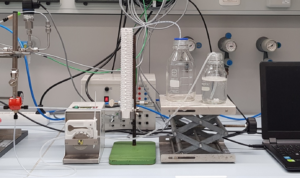Basics of Catalysis
Catalysis is a very complex field of science that enables the efficient production of a wide range of products
Brief overview catalysis
Catalysis is the science of enabling and accelerating chemical transformations. A catalyst is a substance that accelerates a chemical reaction without being consumed itself. With suitable catalysts, reactions can proceed with high efficiency and high yield, and at the same time the formation of undesirable by-products can be avoided. In other words, catalysis is a very complex and interdisciplinary field of science and enables the efficient production of a wide range of products for different industries and at different scales (from a few grams to millions of tons/year). Thus, catalysis is one of the key technologies to address the major challenges of climate change, sustainable energy supply, food security and sustainable chemical product supply at the same time.

Graphical representation of targeted digital catalysis | ©S. Espinoza
The complex field of catalysis encompasses various disciplines such as the homogene, the Photo-, the Bio-, the heterogene and the Elektrokatalyse. Furthermore, catalysis also includes disciplines that cannot be decoupled from the reaction itself due to the nature of the process. These include reactor design and process engineering. Scientific progress is based on both experimental and computer-assisted methods. For catalysts that are solids, there is also a close relationship with materials science, while in the area of biocatalysis there is close interaction with microbiology and molecular biology. The individual areas of catalysis are presented in more detail below.
Would you like to do more than stay informed?
You can join NFDI4Cat as a member and actively shape the digital future of catalysis!
Contact us


